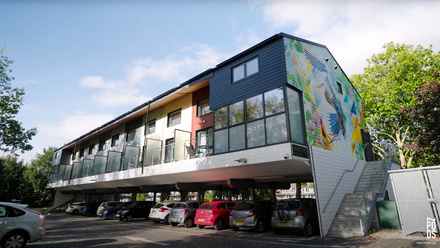Government permitted development plans need rethink, says CIC
CIC, of which CIAT is a member, has set out a number of concerns in its response to the Ministry of the Housing Communities and Local Government Consultation on Supporting housing delivery and public service infrastructure.
The organisation said the proposals could alienate communities by allowing inappropriate development to be foisted on them, whilst not making any contribution to local infrastructure. The CIC also expressed concerns over quality and safety standards and the longer term impact on areas by providing easier routes to deliver new homes without proper regard for placemaking and amenity space.
Professor Tony Crook MBE, Chair of the CIC Housing Panel and Emeritus Professor of Town & Regional Planning at the University of Sheffield, said: "This whole area will need more clarity. Space, quality standards and safety are all areas of concern to us, as is the fact that permitted development does not allow the knitting together of the necessary infrastructure."
He added: "At a time when local resources are stretched, and will become even more so as councils count the cost of the pandemic, we see no reason why permitted development should be an exception to the principle of delivering sufficient infrastructure alongside new housing."
President-Elect Kevin Crawford MCIAT, CIAT representative on the CIC Housing Panel commented: “CIAT supports the views of the Construction Industry Council in their response to government.”
CIC has set out a number of measures to provide confidence to communities and professionals.
Additional safeguards should:
- Introduce more prior approval conditions (conditions that would be required to receive traditional planning consent) as part of the permitted development process. These should ensure that space, quality and safety are considered in relation to existing infrastructure and that they comply with the requirements covering materials, amenities and public realm that have been set out in Local Plans.
- Incorporate permitted development for conversion to residential into Local Plans that can be updated regularly – and ensure communities are engaged in this process.
- Ensure housing delivered through permitted development incorporates an element of Community Infrastructure Levy or Section 106, thereby providing contributions towards affordable housing and community infrastructure.
- Ensure that the homes delivered through permitted development are subject to all the checks and balances that will be applied in the new Building Safety legislation. This must include requirements that those buildings which fall under the new Building Safety legislation (currently 18m or more and other higher risk buildings) will be subject to the newly proposed Gateway One checks, even though there is no current requirement for a formal building application to be made at planning stage for permitted development housing schemes.
- Ensure that homes delivered through permitted development are required to meet the new Future Homes Standard.
- Ensure that permitted development comes under the auspices of the New Homes Ombudsman, which CIC has been instrumental in campaigning for through its sponsorship of the All-Party Parliamentary Group for Excellence in the Built Environment. This would safeguard rights of redress of new homeowners in these schemes.






